by Sonam Srivastava
Published On Dec. 16, 2023
In the world of finance, predicting stock market trends is akin to finding a treasure map. It's particularly crucial in vibrant economies like India, where the stock market is as dynamic as it is unpredictable. Understanding and forecasting market movements can be a game-changer for investors and policymakers.
India's financial market is a complex arena, marked by rapid growth and diverse sectors. It's a place where global and domestic factors intertwine, influencing stock prices. For those navigating this market, accurate predictions are invaluable.
Enter machine learning, a subset of artificial intelligence that's transforming various industries, including finance. It involves teaching computers to analyze vast amounts of data to predict future events. In the stock market, this means using historical economic data to anticipate future trends.
This is where Sonam Srivastava and Akashdeep Bhateja's research comes in. Their study, "Predicting Regimes in the Indian Market with Macroeconomic Data and Machine Learning," explores the power of macroeconomic indicators in forecasting market returns. Using advanced machine learning models, they aim to reveal the hidden patterns that drive the Indian stock market.
Their research holds the potential to revolutionize investment strategies and policy decisions. By demystifying the complex relationship between economic indicators and market movements, this study stands to transform our understanding of financial markets.
In this blog, we'll simplify their complex research, making the world of machine learning and economic forecasting accessible to all. Whether you're an investor, a finance enthusiast, or simply curious about the future of stock markets, this exploration promises insights and excitement. Let's dive into understanding how technology is reshaping financial predictions in India's dynamic market landscape.
The foundation of any machine learning project is data, and in the case of predicting stock market trends, the quality and quantity of data are paramount. Srivastava and Bhateja began their study with an extensive dataset comprising 70 macroeconomic indicators. These indicators, which are like the vital signs of an economy, included diverse elements such as GDP growth rate, inflation rate, consumer spending, and more. The data was sourced from reliable platforms, ensuring its accuracy and relevance.
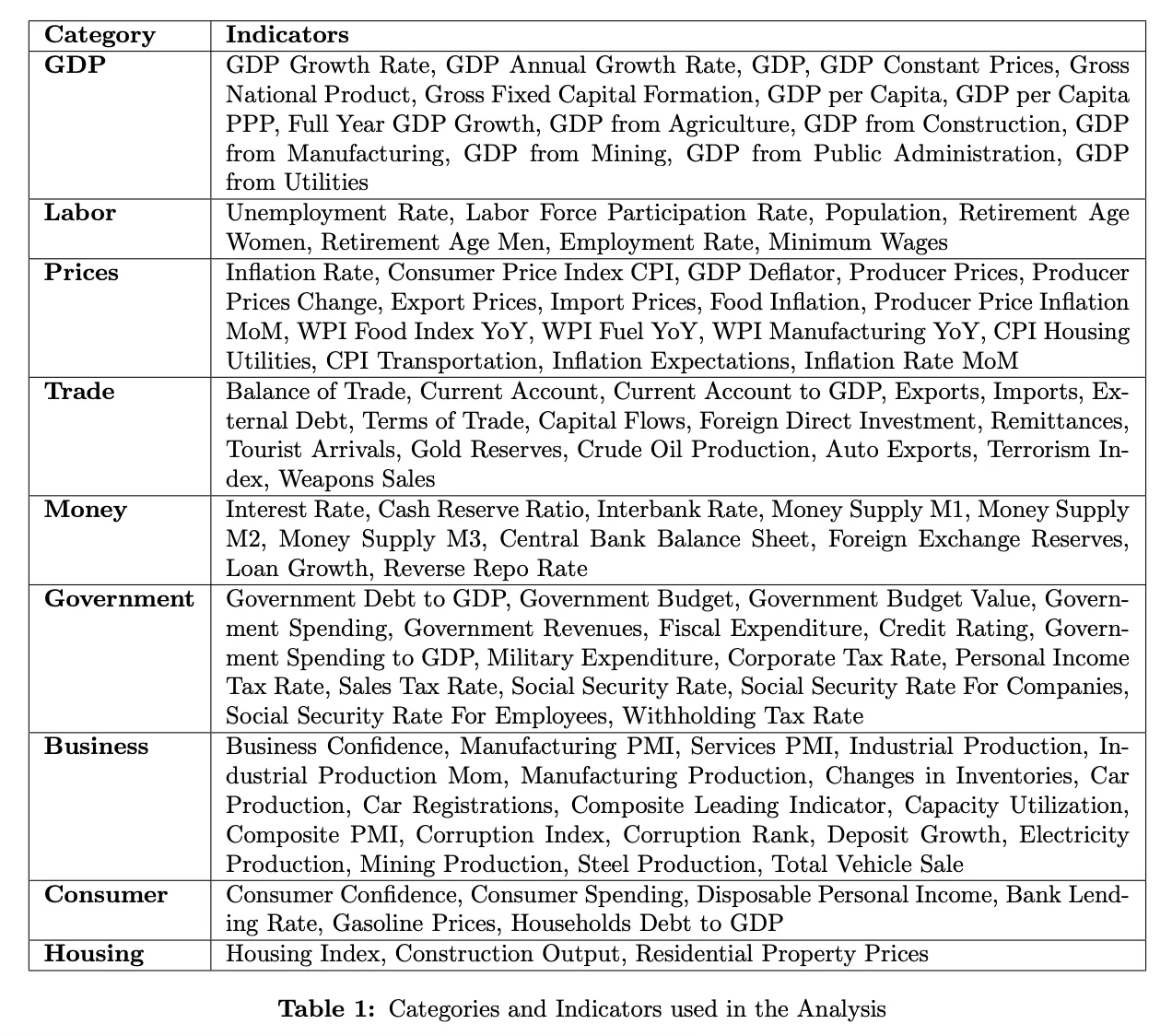
Before diving into analysis, the data underwent rigorous cleaning – a critical step in any data science project. This process involved handling missing values, normalizing data for consistency, and standardizing timestamps across the dataset. Such meticulous data cleaning is essential to avoid skewed results and ensure that the machine learning models work on accurate and relevant information.
With a cleaned dataset in hand, the next step was feature selection. This process involved narrowing down the 70 macroeconomic indicators to the most impactful ones. The researchers used advanced techniques to identify the top 10 indicators that had the most significant influence on the stock market. This step is crucial because it helps focus the model on the most relevant data, improving its accuracy and efficiency.
A novel aspect of their methodology was the use of backcasting, particularly with the XGBoost algorithm. Backcasting is a technique used to estimate historical data points that are missing. By employing this method, the researchers could fill in gaps in their dataset, especially for key indicators, thereby enriching their analysis and making their predictions more robust.
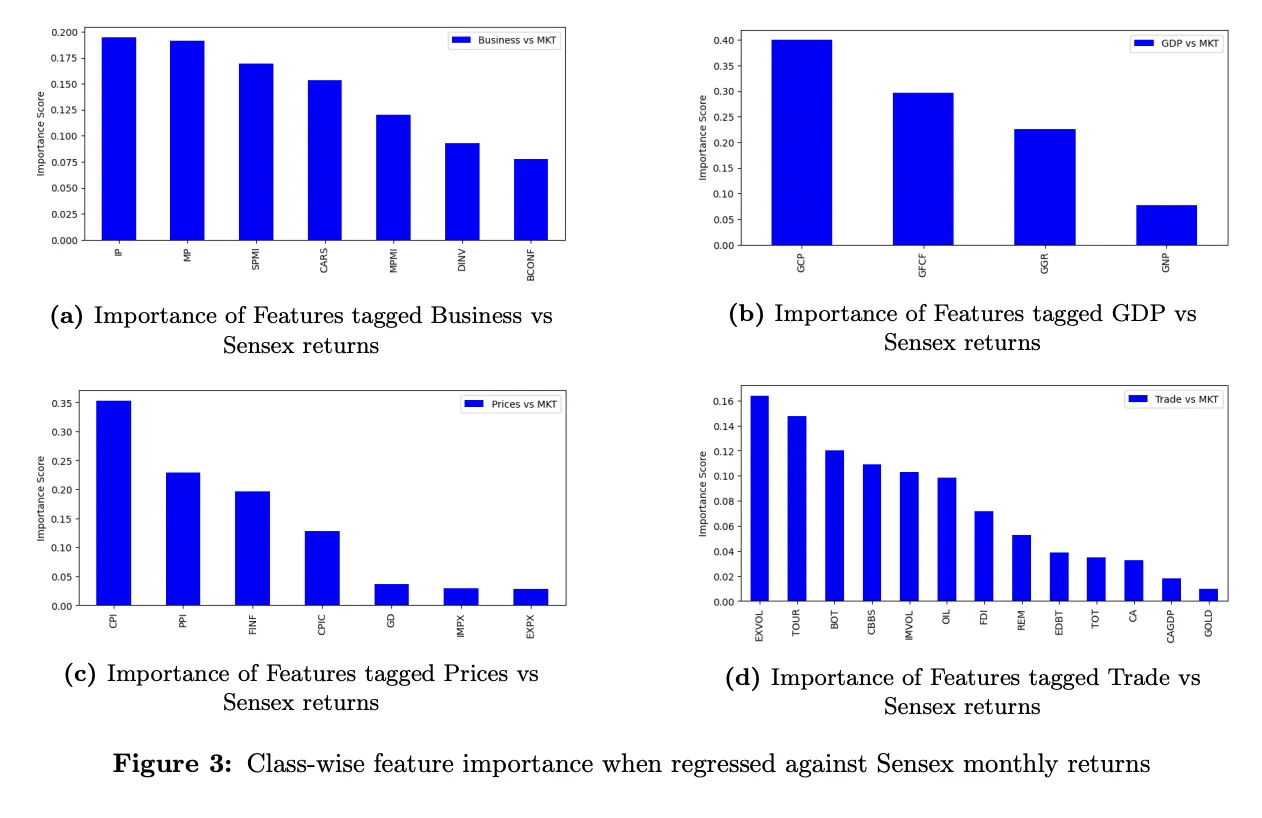
With the data prepped and ready, the researchers employed several advanced machine learning models:
XGBoost: Known for its speed and performance, XGBoost was used for its ability to handle large datasets and its effectiveness in classification and regression tasks.
RandomForest: This model was chosen for its accuracy and ability to run efficiently on large databases. It works by building multiple decision trees and merging them to get a more accurate and stable prediction.
Decision Tree: A simpler model compared to the others, but valuable for its ease of interpretation. It was used to provide a baseline for the more complex models.
The study's approach was twofold. First, they aimed to predict the monthly returns of the Sensex, India's major stock market index, using the selected macroeconomic indicators. This part of the study was about understanding how these indicators directly impact market returns.
Second, they sought to classify the market into different regimes – 'Normal' and 'Crash'. This involved using trend-filtering techniques to smooth out short-term market fluctuations and identify longer-term trends and patterns.
This comprehensive approach allowed the researchers not only to predict market returns but also to gain deeper insights into the market's behavior under different economic conditions. By classifying market regimes, they could provide a nuanced understanding of market dynamics, which is invaluable for investors and policymakers.
In the following sections, we'll delve into the findings of this research and explore how these advanced machine learning techniques shed light on the complex world of the Indian stock market.
Machine learning, a branch of artificial intelligence, has revolutionized the way we analyze and interpret data. At its core, machine learning involves training computers to learn from data, identify patterns, and make decisions with minimal human intervention. It's about giving machines the ability to learn and adapt through experience, much like humans do.
In the realm of finance, machine learning has emerged as a powerful tool for several reasons:
Handling Complex Data: Financial markets generate vast amounts of data daily. Machine learning algorithms excel at processing and making sense of this complex data, uncovering insights that might be missed by traditional analysis.
Predictive Analytics: One of the most compelling uses of machine learning in finance is predictive analytics. By analyzing historical data, machine learning models can forecast future trends and market movements, providing a significant advantage in decision-making.
Adaptability: Financial markets are dynamic and constantly evolving. Machine learning models can adapt to new patterns and changes in the market, continually refining their predictions over time.
In their groundbreaking research, Srivastava and Bhateja leveraged these models to analyze how various macroeconomic indicators influence the Indian stock market. The models were trained on historical data, learning to recognize patterns and relationships between economic indicators and market movements. This approach allowed them to predict future market returns and identify different market regimes, such as 'Normal' and 'Crash'.
Traditional financial analysis often relies on linear models and assumptions that may not hold in the complex, non-linear world of financial markets. Machine learning, with its ability to handle non-linearity and learn from data, offers a more nuanced and accurate analysis. It can identify subtle patterns and relationships that traditional methods might overlook.
The application of machine learning in finance is still evolving. As these technologies become more sophisticated, their potential to transform financial analysis and forecasting grows. From individual investors to large financial institutions, the ability to accurately predict market trends using machine learning could redefine strategies and decision-making processes.
One of the most significant outcomes of Srivastava and Bhateja's research was the successful prediction of the Sensex's monthly returns. By employing the XGBoost model, they achieved a mean squared error (MSE) of 0.05, indicating a high level of accuracy in their predictions. This is a notable achievement considering the complexity and volatility of the Indian stock market.
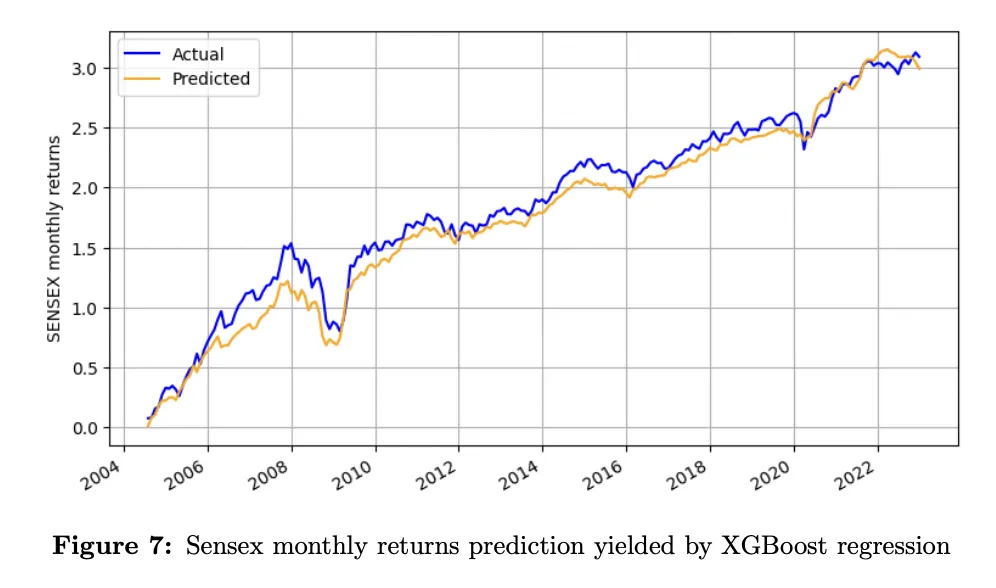
The study revealed that certain macroeconomic indicators had a more pronounced impact on market returns. Among the top 10 features, remittances, the Consumer Price Index (CPI), and the Gross Domestic Product growth rate (GGR) emerged as the most predictive. This insight is particularly valuable as it highlights the specific economic factors that investors and policymakers should monitor closely.
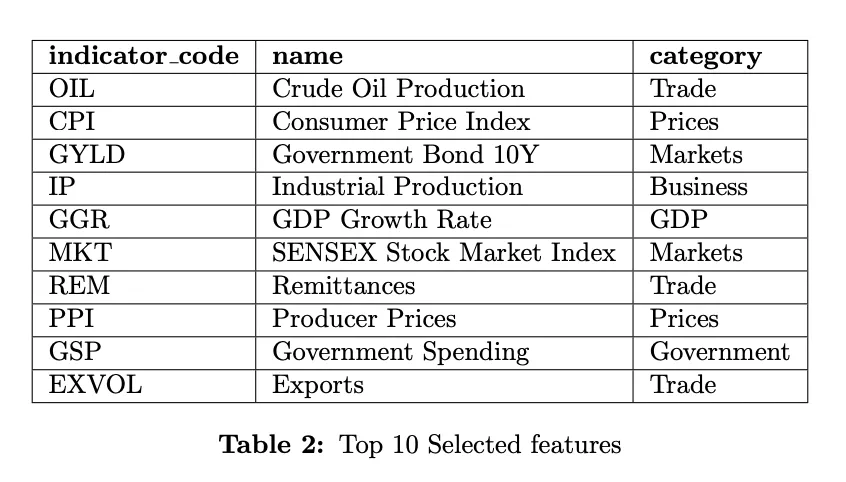
Distinguishing Between 'Normal' and 'Crash' States:
Another critical aspect of the study was the classification of market conditions into 'Normal' and 'Crash' regimes. The researchers applied trend-filtering techniques to the Sensex data, successfully identifying periods of stability and significant downturns. This classification provides a clearer understanding of market dynamics, helping investors and policymakers make more informed decisions.
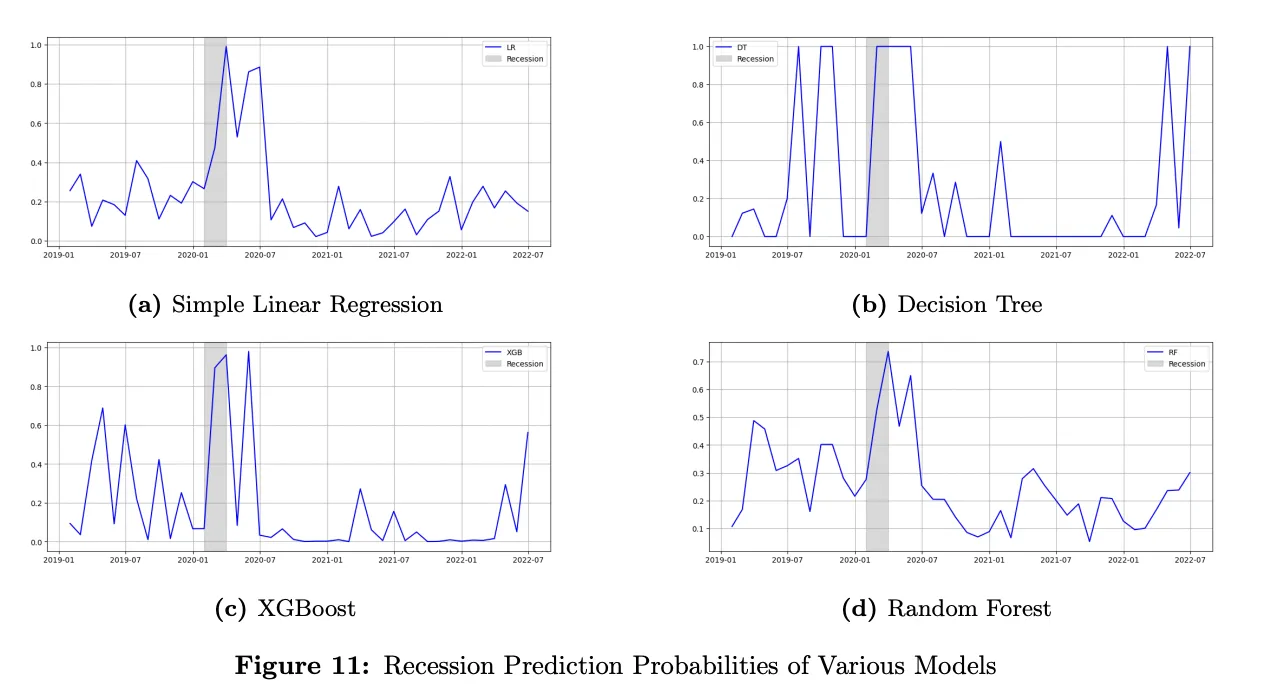
Trend filtering was instrumental in smoothing out short-term market fluctuations, allowing the researchers to focus on longer-term trends. By applying methods like Hodrick-Prescott (H-P) filtering, they could delineate different market regimes, offering strategic insights for investment and policy formulation.
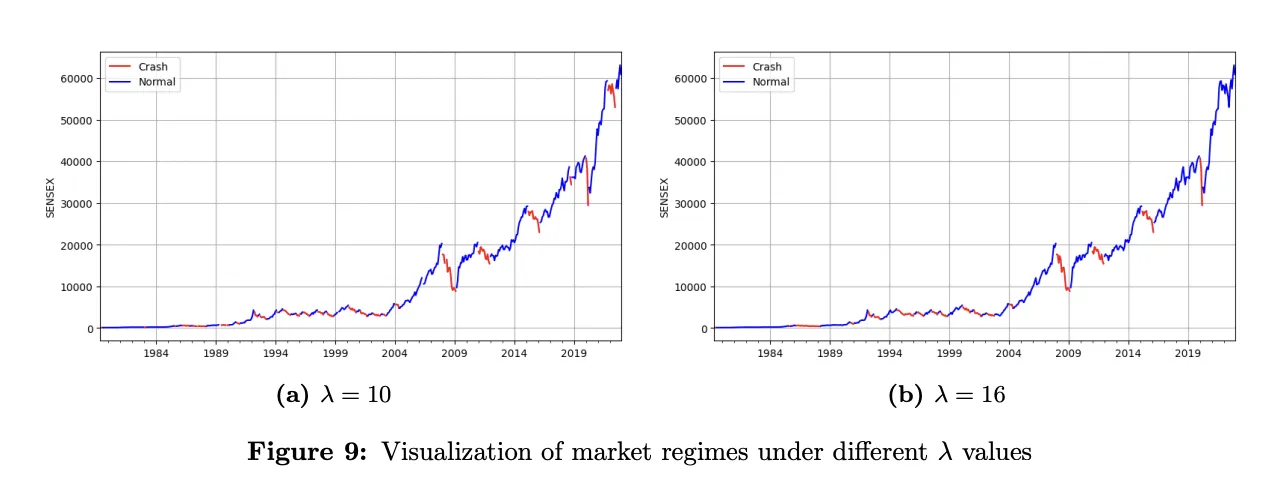
The robustness of the models was further affirmed through rigorous cross-validation using a time series split methodology. This validation process ensured that the models were not overfitting and could generalize well to unseen data. Sensitivity analyses on various model parameters, including the regularization parameter in XGBoost, helped fine-tune the models for optimal performance.
The study's findings have significant economic implications. For instance, the high importance of the CPI reflects the impact of inflationary trends on market returns, while the prominence of remittances underscores the influence of global economic conditions on the Indian market. Understanding these relationships is crucial for developing effective investment strategies and economic policies.
Interestingly, the inclusion of moving averages and moving standard deviations in the models did not significantly enhance performance. This led the researchers to focus on the original set of ten features, emphasizing the importance of precise feature selection in machine learning models.
The results of this study open new avenues for research, especially in understanding the impact of macroeconomic indicators on market regimes. They also provide practical tools for investors and policymakers to navigate the complexities of emerging financial markets like India.
Sonam Srivastava and Akashdeep Bhateja's study marks a significant advancement in financial market analysis, blending machine learning with economic data to illuminate the Indian stock market's complexities.
The research identifies key economic indicators crucial for informed investment and policy decisions, showcasing the practical utility of advanced analytical techniques in finance.
This pioneering work paves the way for further exploration in applying advanced AI methods across diverse financial landscapes, promising to reshape financial decision-making with data-driven insights.
In summary, this study represents a crucial step in the evolution of financial forecasting, highlighting the power of AI in unlocking market trends and guiding strategic decisions in the financial world.
You can check the whole paper here .
Other interesting articles to explore to understand use of AI & quantitative investing in detail:
Discover investment portfolios that are designed for maximum returns at low risk.
Learn how we choose the right asset mix for your risk profile across all market conditions.
Get weekly market insights and facts right in your inbox
Get full access by signing up to explore all our tools, portfolios & even start investing right after sign-up.
Oops your are not registered ! let's get started.
Please read these important guidelines
It depicts the actual and verifiable returns generated by the portfolios of SEBI registered entities. Live performance does not include any backtested data or claim and does not guarantee future returns
By proceeding, you understand that investments are subjected to market risks and agree that returns shown on the platform were not used as an advertisement or promotion to influence your investment decisions
Sign-Up Using
A 6 digit OTP has been sent to . Enter it below to proceed.
Enter OTP
Set up a strong password to secure your account.
Skip & use OTP to login to your account.
Your account is ready. Discover the future of investing.

Login to start investing on your perfect portfolio
A 6 digit OTP has been sent to . Enter it below to proceed.
Enter OTP
Login to start investing with your perfect portfolio
Forgot Password ?
A 6 digit OTP has been sent to . Enter it below to proceed.
Enter OTP
Set up a strong password to secure your account.
Your account is ready. Discover the future of investing.

By logging in, you agree to our Terms & Conditions
SEBI Registered Portfolio Manager: INP000007979 , SEBI Registered Investment Advisor: INA100015717


Tell us your investment preferences to find your recommended portfolios.
Choose one option
Choose multiple option
Choose one option
Choose one option
Choose multiple option
/100
Investor Profile Score
Congratulations ! 🎉 on completing your investment preferences.
We have handpicked some portfolios just for you on the basis of investor profile score.
View Recommended Portfolios